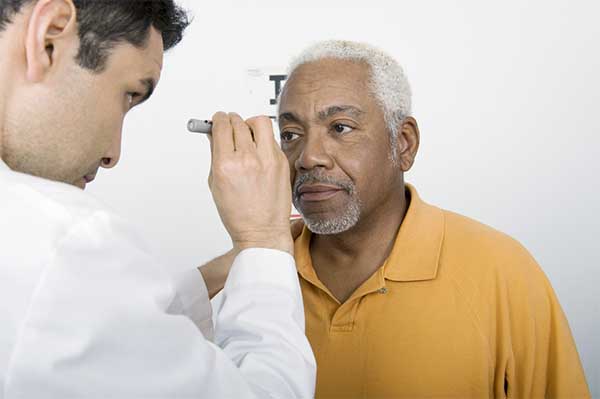WASHINGTON, DC—(Pinkston News Service)—As we age, our eyes are increasingly susceptible to a number of ocular conditions. One such condition – Age-Related Macular Degeneration (AMD) – impacts nearly 22 million people in the U.S. alone. This disease causes the blurring of an individual’s central vision and is typically caused by the aging of the macula – the part of the eye responsible for the sharpness of vision. It is the leading cause of vision loss for older adults.
The unfortunate reality of AMD is that 30% of eyes diagnosed with the disease could have been treated if diagnosed early. But 78% of patients do not seek treatment until their vision is irreversibly damaged.
Dr. Mohamed Abou Shousha, an ophthalmologist at the University of Miami’s Bascom Palmer Eye Institute, and founder and CEO of the vision technology company, Heru, shares five risk factors that could indicate the presence of this condition.
1. Your age
As the name suggests, aging is one of the leading causes of AMD. In fact, AMD impacts 1 in 8 adults over the age of 60. As you age, it is important you ask your doctor to test your eyes for indicators of AMD.
2. Family history
If a family member has been diagnosed with AMD, it is likely you could be as well. Studies have shown that if you have a close relative, such as a sibling or parent, you are 15-20% more likely to develop AMD.
3. Overweight? Smoke?
If you are overweight and smoke, you have key risk factors that make you especially vulnerable to the disease.
4. Your eyes do not adjust to the dark
Dark adaptation is a measure of the time it takes for your eyes to adjust when moving from bright lights to areas with dim lighting. If adjusting to the dark takes longer for you than normal, it could be an indicator of AMD.
5. You have difficulty seeing at night
If you notice difficulty driving at night, have trouble seeing pedestrians walking along underlit streets, or fail to notice that final step on the staircase, this could indicate the presence of AMD.
“Most individuals suffering from AMD do not know they have it until the disease has progressed significantly,” said Dr. Abou Shousha. “Early detection is a key to preventing permanent vision loss and that can easily be done with regular eye examinations, coupled with healthy living.”
The American Optometric Association (AOA) recommends an annual eye exam for adults 65 years and older and every two years for adults 18-64 years of age. Those intervals could change based on risk factors and on the recommendation of a physician.


